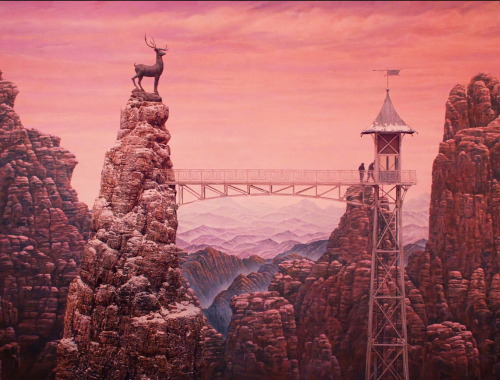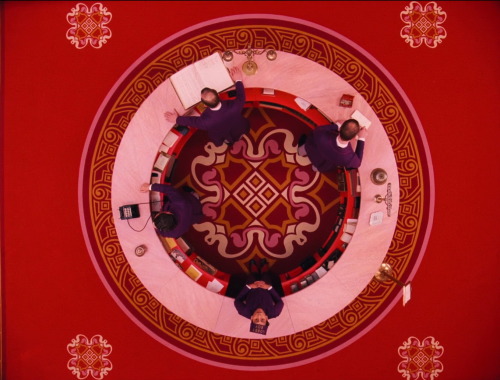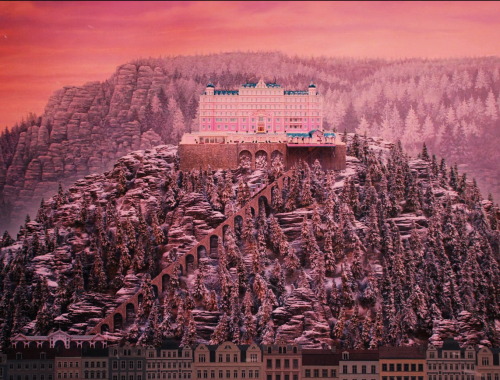Most Popular Paintings On The Blog In 2017, In No Particular Order:










Most popular paintings on the blog in 2017, in no particular order:
Hilda Hechle (British, 1886 - 1939): A moonlight phantasy
Emma Ciardi (Italian, 1879 - 1933): Courtly Company with Parasols
Elizabeth Strong (American, 1855 - 1941): Deer in the woods
Maria Wiik (Finnish, 1853 - 1928): La Polonaise (Marie Bashkirstseff) (1878)
Helmi Biese (Finnish, 1867 - 1933): View from Pyynikki Ridge (1900)
Lilian Stannard (British, 1877 - 1944): Michaelmas daisies
Isabel Codrington (British, 1874 - 1943): Evening
Evelyn De Morgan (English, 1855 - 1919): Aurora triumphans (1873)
Mary Hayllar (British, active 1880 - 1885): Breakfast (1880)
Marguerite Gérard (French, 1761 - 1837): La toilette de minette
More Posts from Roulette-a and Others
Ancient Moche Female Ruler Is Given A Face

We do not know what she called herself, but today she is known as the Lady of Cao. She lived and died in northern Peru 1,700 years ago. We know she was a high-status woman of the Moche culture, because she was buried in a tomb in a pyramid, with a crown and surrounded by gold and copper artifacts. The tomb also suggests that Lady of Cao may have been a warrior: she was buried a number of weapons, including two massive war clubs, and twenty-three spear-throwers!
Modern science has revealed that the Lady of Cao was in her twenties when she died, likely of childbirth or complications following childbirth. Her feet, legs and face were tattooed with magic symbols of serpents and spiders. And now, science has revealed to us her face.
Do you think I am an automaton? — a machine without feelings? and can bear to have my morsel of bread snatched from my lips, and my drop of living water dashed from my cup? Do you think, because I am poor, obscure, plain, and little, I am soulless and heartless? You think wrong! — I have as much soul as you — and full as much heart! And if God had gifted me with some beauty and much wealth, I should have made it as hard for you to leave me, as it is now for me to leave you. I am not talking to you now through the medium of custom, conventionalities, nor even of mortal flesh: it is my spirit that addresses your spirit; just as if both had passed through the grave, and we stood at God’s feet, equal — as we are!
Charlotte Brontë, Jane Eyre (via wonderwarhol)


Why is the Circumference of a Circle the Derivative of its Area?: A Visual Explanation
Circumference = 2πr
Area = πr^2
You may have noticed that the circumference of circle is the derivative of its area with respect to the radius. Similarly, a sphere’s surface area (SA = 4πr^2) is the derivative of its volume (Volume = 4/3πr^3). This isn’t a coincidence! But why? And is there an intuitive way of thinking about it?
Calculus refresher: Finding the derivative of a function is finding its rate of change. For example, consider the function y = x^2. The derivative of this function is 2x, which describes how much, in terms of x, y changes when x changes. Integration is the reverse process of derivation. Finding the integral of a function first considers the function a rate of change. Then, by multiplying it by infinitesimally small increments of x from a lower bound to an upper bound, the process of integration computes the definite integral, a new function whose derivative was the original function. Think of a car moving at a velocity over time. The rate of change of the velocity is the cars acceleration. Additionally, if you multiply the velocity by how much time has passed, you get the total distance traveled by the car. Therefore, acceleration is velocity’s derivative and distance traveled is velocity’s integral.
So what is the rate of change of a circle? Consider a circle with the radius r. If you increase the radius by ∆r, the area of the new circle is πr^2 + the area of the added ring. The ring’s area is 2πr (which is the rings length) * ∆r (the ring’s height). This is indicated by the first gif, in which the new rings have the length ∆r. To find the rate of change, we take the limit as ∆r goes to 0. The limit as ∆r goes to 0 of 2πr∆r is simply 2πr!
Let’s find the area of a circle with radius r by integrating its 2πr, its circumference. For the lower bound of our integration, think of the smallest circle we can make—a circle with radius 0. The largest circle we can make is a circle with radius r—our upper bound. We draw our smallest circle (radius 0), and then continuously add tiny rings to it by increasing r and drawing another circle, keeping the change of r as tiny as possible. We stop when r has reached our upper bound. As the second gif demonstrates, we are left with what is pretty much a filled circle! We went from 1 dimensional lines, to a 2D figure with an area of πr^2. This a fun way of visualizing the integration of 2πr from 0 to r!
So, based on this explanation, can you figure out a way to visualize why the surface area of a sphere is the derivative of its volume? Hint: jawbreakers (or onions, alternatively)!

“I must say, I find that girl utterly delightful. Flat as a board, enormous birthmark the shape of Mexico over half her face, sweating for hours on end in that sweltering kitchen, while Mendl, genius though he is, looms over her like a hulking gorilla. Yet without question, without fail, always and invariably, she’s exceedingly lovely.”









The grand Budapest hotel. {Headers}
Like this post if you save/use.




Les temps sont durs pour les rêveurs










The Grand Budapest Hotel screenshots - cinematography by Robert D. Yeoman - 2013
-
 forsurenotaniczka liked this · 3 months ago
forsurenotaniczka liked this · 3 months ago -
 moonlit-dungeon reblogged this · 2 years ago
moonlit-dungeon reblogged this · 2 years ago -
 katabasis-gallery liked this · 2 years ago
katabasis-gallery liked this · 2 years ago -
 lempimielikki reblogged this · 4 years ago
lempimielikki reblogged this · 4 years ago -
 marianephele liked this · 4 years ago
marianephele liked this · 4 years ago -
 eborg1 liked this · 4 years ago
eborg1 liked this · 4 years ago -
 explorator-ludo liked this · 5 years ago
explorator-ludo liked this · 5 years ago -
 cocoatunda liked this · 6 years ago
cocoatunda liked this · 6 years ago -
 fishee reblogged this · 6 years ago
fishee reblogged this · 6 years ago -
 albinasister11 reblogged this · 6 years ago
albinasister11 reblogged this · 6 years ago -
 bohemianbitch reblogged this · 6 years ago
bohemianbitch reblogged this · 6 years ago -
 the-paintrist liked this · 6 years ago
the-paintrist liked this · 6 years ago -
 myzakka reblogged this · 6 years ago
myzakka reblogged this · 6 years ago -
 deadsappyseal reblogged this · 7 years ago
deadsappyseal reblogged this · 7 years ago -
 zephyr-d-azur liked this · 7 years ago
zephyr-d-azur liked this · 7 years ago -
 ironsublimeangel liked this · 7 years ago
ironsublimeangel liked this · 7 years ago -
 breval reblogged this · 7 years ago
breval reblogged this · 7 years ago -
 mybedofdreams reblogged this · 7 years ago
mybedofdreams reblogged this · 7 years ago -
 letsgetlostinthecinema liked this · 7 years ago
letsgetlostinthecinema liked this · 7 years ago -
 nidiosniciencia reblogged this · 7 years ago
nidiosniciencia reblogged this · 7 years ago -
 nidiosniciencia liked this · 7 years ago
nidiosniciencia liked this · 7 years ago -
 halal-and-queer-blog liked this · 7 years ago
halal-and-queer-blog liked this · 7 years ago -
 warriorblush liked this · 7 years ago
warriorblush liked this · 7 years ago -
 ggoombs liked this · 7 years ago
ggoombs liked this · 7 years ago -
 freshstrawberrycollection-blog liked this · 7 years ago
freshstrawberrycollection-blog liked this · 7 years ago -
 roulette-a reblogged this · 7 years ago
roulette-a reblogged this · 7 years ago -
 roulette-a liked this · 7 years ago
roulette-a liked this · 7 years ago -
 robahtoe liked this · 7 years ago
robahtoe liked this · 7 years ago -
 fromagebonbon liked this · 7 years ago
fromagebonbon liked this · 7 years ago -
 unknownthinkingprocesses reblogged this · 7 years ago
unknownthinkingprocesses reblogged this · 7 years ago -
 unknownthinkingprocesses liked this · 7 years ago
unknownthinkingprocesses liked this · 7 years ago -
 hautdogg liked this · 7 years ago
hautdogg liked this · 7 years ago -
 lrynt252 liked this · 7 years ago
lrynt252 liked this · 7 years ago -
 bbciii liked this · 7 years ago
bbciii liked this · 7 years ago -
 jasartist liked this · 7 years ago
jasartist liked this · 7 years ago
















